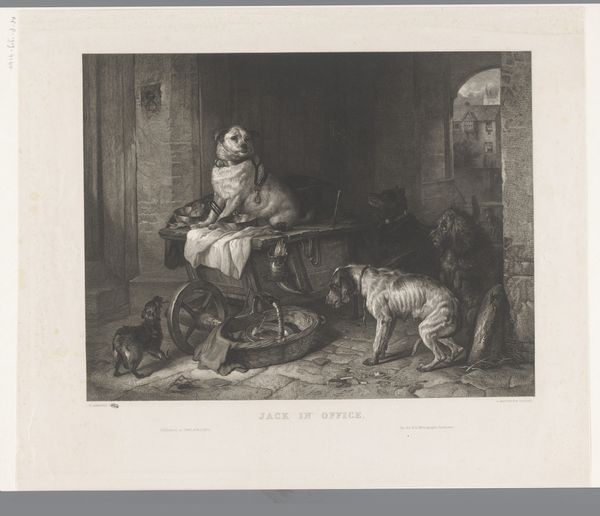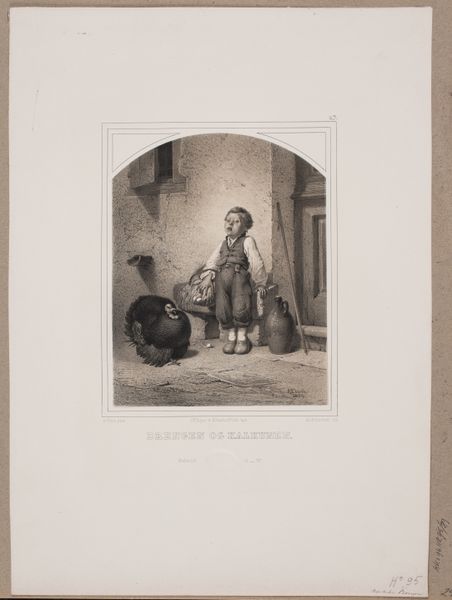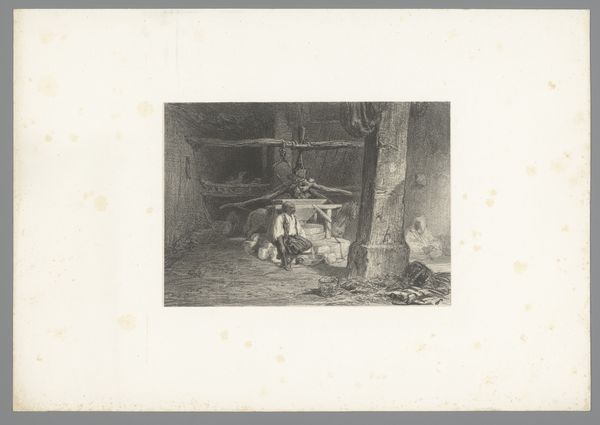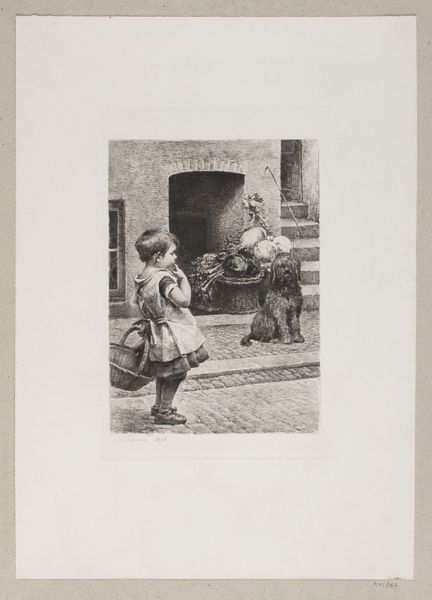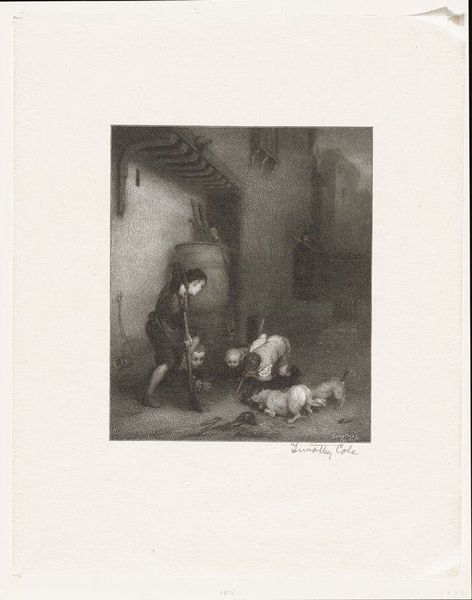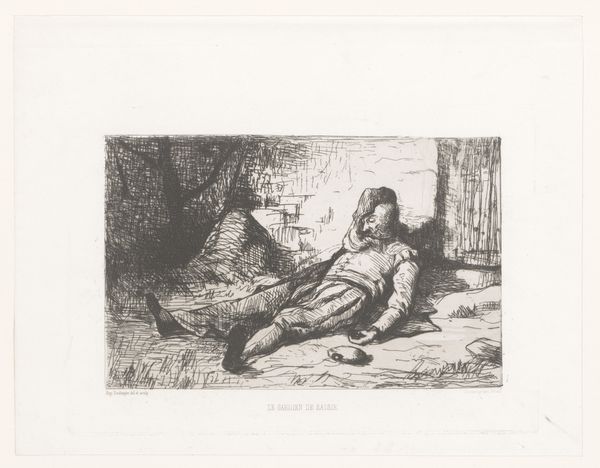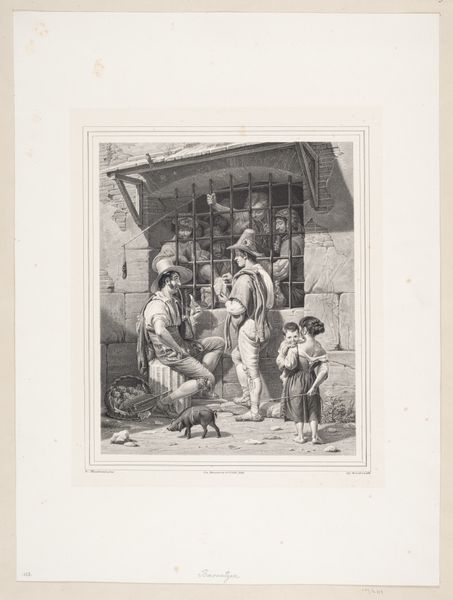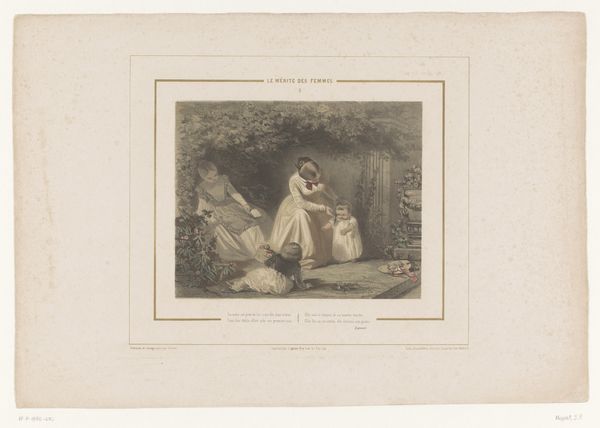
drawing, print
#
drawing
# print
#
landscape
#
figuration
#
romanticism
#
line
#
genre-painting
Dimensions: Sheet: 8 1/4 in. × 11 in. (21 × 27.9 cm)
Copyright: Public Domain
Editor: This is Alexandre-Gabriel Decamps' "Recess," made in 1834, a drawing and print currently held at the Met. It strikes me as a depiction of impoverished rest. What aspects of the work stand out to you? Curator: Consider the material realities inherent in the production of a print like this in 1834. Think of the labour involved in creating the matrix, whether etched or engraved. This isn't some spontaneous sketch, but a carefully reproduced image meant for wider circulation, yes? Editor: Absolutely. It makes me think about the intended audience. Who would have been able to afford such a print? Curator: Exactly! And what does the subject matter suggest about that audience? Are they identifying with these children, or are they consuming an image of poverty from a position of privilege? Notice the dirt, the worn clothing. These details are meticulously rendered, underscoring the materiality of their existence. What purpose might this serve? Editor: Perhaps to evoke empathy or… perhaps just to visually distinguish them as "other"? The landscape seems almost oppressive as well. Curator: Precisely! Romanticism often exoticizes poverty, imbuing it with a certain picturesque quality, yet conveniently obscuring the harsh realities of labor exploitation that fuelled industrialization. Is "Recess" merely documenting or is it perhaps complicit in this broader trend? Editor: That's a great question, one I hadn't considered. It's much more than just a scene of children resting. I'm definitely looking at the piece differently now. Curator: Indeed, considering the production and intended consumption of this image is crucial to understanding its role within its socio-economic context. This awareness makes us more mindful of these representations, especially nowadays, no?
Comments
No comments
Be the first to comment and join the conversation on the ultimate creative platform.

